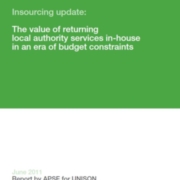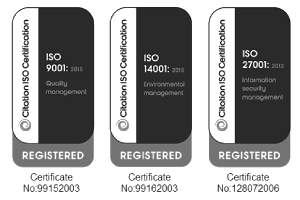Insourcing update: The value of returning local authority services in-house in an era of budget constraints
Severe budgetary pressure faced by local authorities across the UK is encouraging councils to review their service delivery arrangements. Decisions as to how to respond depend upon both the overall strategic direction of the authority and pragmatic analysis of circumstances on a service-by-service basis. While some authorities are externalising as much as possible, there is evidence that others are bringing a significant number and range of services back in-house in order to gain maximum value from decreasing resources. APSE’s 2009 publication examined the phenomenon of ‘insourcing’ in local government. Evidence suggests that the phenomenon has continued and that insourcing is an increasingly positive option in an era of budget constraints.
A survey was undertaken among local authority officers and elected members to determine which services are being insourced, why they are being brought back in-house and what outcomes this is
delivering.
The research, conducted by APSE, honed in on some 50 examples of insourcing in a range of services areas across the UK. These examples examine reasons cited for insourcing, which centre around cost savings, flexibility, service quality improvements and ability to enhance local accountability. Case studies in this report provide in-depth examples of the background behind the decision to insource, the outcomes achieved and the lessons learned. Examples from around the UK show where significant cost savings are being achieved as a result of insourcing. Survey findings on quality issues are borne out by case studies, which show that councils that have brought services back in-house are delivering higher quality services. The case studies also make clear the importance of increased flexibility, provided by insourcing, is particularly in the current, difficult financial times.


.png)



.png)